Rain Alleviates Bushfires in Australia, but Threatens Waterways
Pollution concerns rise following recent rains.
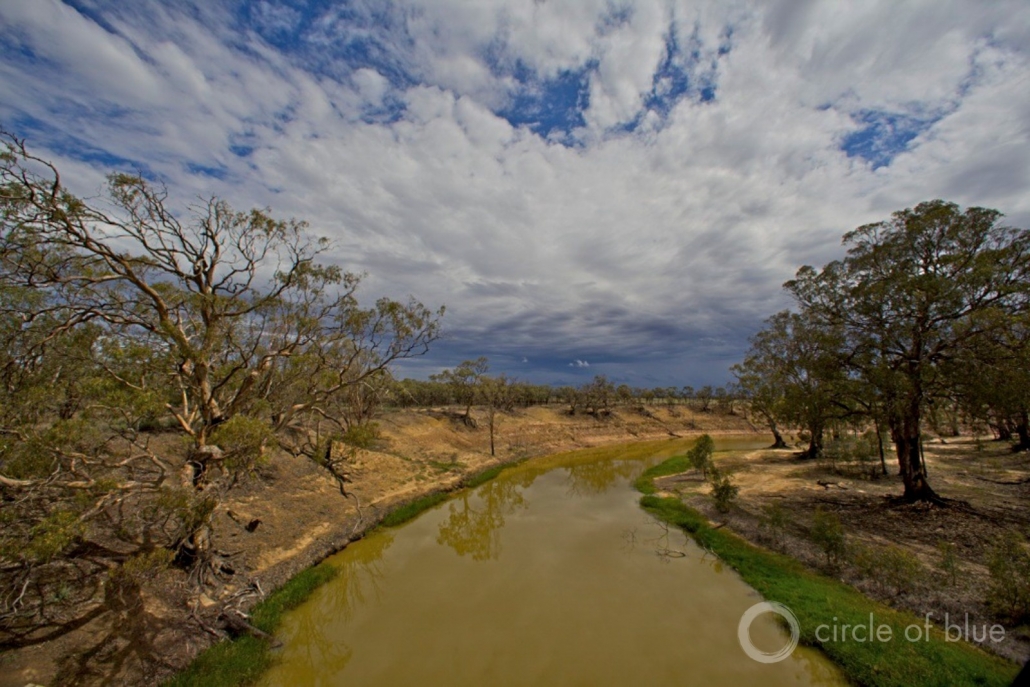
Murray-Darling river system, Australia. Photo © J. Carl Ganter / Circle of Blue
Rainfall blanketed parts of eastern Australia in recent weeks, partially dousing dozens of bushfires blazing in the country. Communities welcomed the cloudbursts, but the rain comes with a significant downside. There are fears that as water flows through a charred landscape, the runoff will pollute rivers and interfere with municipal water treatment.
The fires pose both current and future risks to drinking water, experts say. Several towns in New South Wales were under boil water advisories at the end of December after bushfires led to power outages, which shut down water treatment plants. Elsewhere in the state, treatment plants have been damaged by fires, or overwhelmed by the amount of water needed to maintain firefighting efforts.
In late December, the fires also threatened the main water supply for Sydney, capital of New South Wales. The Green Wattle Creek and Ruined Castle fires nearly encircled Lake Burragorang and the Warragamba Dam, which provide around 80 percent of the city’s water. Firefighters spent the last days of 2019 protecting the catchment.
“The striking thing is just how long the effects of these fires persist,” Ross Thompson, a freshwater ecologist at the University of Canberra, explained to National Geographic. “The time it takes these systems to recover, particularly in terms of providing a water supply, is in the order of a decade. That’s important because both Sydney and Melbourne’s catchments have been reasonably badly affected by recent fire events.”
The extent of the damage, and the immediate consequences for water supplies, will be revealed after the bushfires are extinguished. Heavy rainfall will wash ash, debris, and scorched soil into lakes, rivers, and streams, which could cause pollution loads to soar.
The ash holds high levels of nutrients, including nitrogen and phosphorous. These can contribute to the growth of cyanobacteria, or blue-green algae. In some cases, cyanobacteria release toxins, adding another layer of complexity to water treatment.
Bushfires also increase the amount of organic matter in rivers. Most treatment plants are equipped to filter some suspended particles, but the large numbers that are present after bushfires are likely to clog filters, delaying water treatment capabilities.
“We are not accustomed to having massive amounts of cyanobacteria and ash coming through our plants,” Stuart Khan, an engineer at the University of New South Wales in Sydney, told National Geographic. “[T]he treatment processes might be slowed down significantly.”
Record-Breaking Fire Conditions
Australia is enduring an exceptional bushfire season, with more than 18 million hectares (44 million acres) scorched as of mid-January. The fires have reportedly destroyed over 5,900 buildings, and the death toll reached 33 on Friday, January 24. Millions of animals have also perished in the blazes.
Thousands of bushfires break out each year in Australia, but this season has been especially punishing due to dry, hot conditions. The country has been mired in severe drought since 2017, and is now witnessing one of the hottest summers on record. December 18, 2019, was the warmest day ever recorded in Australia, with countrywide temperatures averaging 40.9 degrees °C (105 °F).
At peak, more than 150 bushfires were blazing across the country, with conditions becoming especially severe in New South Wales and other parts of the east coast. Diligent firefighting efforts, along with recent rainfall, have helped winnow the number and intensity of the blazes, but officials warn the devastation could continue, depending on future weather conditions.
The aftermath of the fires could also be detrimental to ecosystems and wildlife. When rain deluged parts of Victoria and New South Wales in mid-January, the Murray-Darling Basin Authority, a planning agency for the country’s largest watershed, warned that the runoff could trigger another mass fish kill in the river system.
“We would not be surprised to see fish deaths in streams that are picking up ash and sediments from the rainfall,” said Andrew Reynolds, the Authority’s executive director of river operations, in an interview with Guardian Australia. Reynolds noted that the contaminants reduce the amount of dissolved oxygen in the water, jeopardizing fish.
Risks to wildlife extend to the ocean, as ash and other debris gradually flow downstream. The impact of bushfires on marine life is poorly understood, but experts say there is a risk for coastal algae blooms. They also fear that particles could congest the gills of fish, as well as the foraging apparatus of creatures such as mussels and corals.
Devastating Drought Continues
Australia’s crippling dry spell, despite its severity, has taken a backseat to the bushfire emergency. Lack of water is crippling towns throughout much of the country’s interior, with water tanks completely dry in some areas.
In December, local media published “day zero” dates for several coastal towns, warning that some towns may run out of water in January and February. Another local news outlet warned that 90 water-stressed towns in NSW could face relocation as water shortages worsen. New South Wales Cross-Border Commissioner James McTavish debunked these claims, but residents remain concerned about future water supply.
For some communities, “day zero” has already arrived. Water tanks on many rural properties have been dry for months, with residents struggling to afford refills. Government response has been limited, people say, and charities and locals have stepped in to fill the gap.
In Stanthorpe, a small town in southeast Queensland, many people now queue for water every Wednesday and Saturday, when the Granite Belt Water Relief organization distributes 1000 liters (264 gallons) of free water to households. For those whose tanks have run dry, the water is a lifeline.
Les Watnell, who lives near Stanthorpe, received only 40 millimeters (1.6 inches) of rainfall at his property in 2019. Keeping the water tank filled has been challenging, Watnell told the Guardian, and the government has offered no help.
“There’s nothing from the government at all. If it weren’t people like these volunteers, then we don’t know what we’d do,” Watnell said.
David Littleproud, the local representative and federal water minister, says maintaining water supply is the responsibility of state authorities. If the situation becomes dire, however, Littleproud says the federal government will take action.
“The federal government will obviously not stand by if states do not provide water for towns,” Littleproud told the Guardian. “But our expectation is that they secure water now and into the future with better planning and building of water infrastructure for future droughts.”
Kayla Ritter is a recent graduate of Michigan State University, where she studied International Relations and Teaching English to Speakers of Other Languages. She is currently based in Manton, Michigan. Kayla enjoys running, writing, and traveling. Contact Kayla Ritter

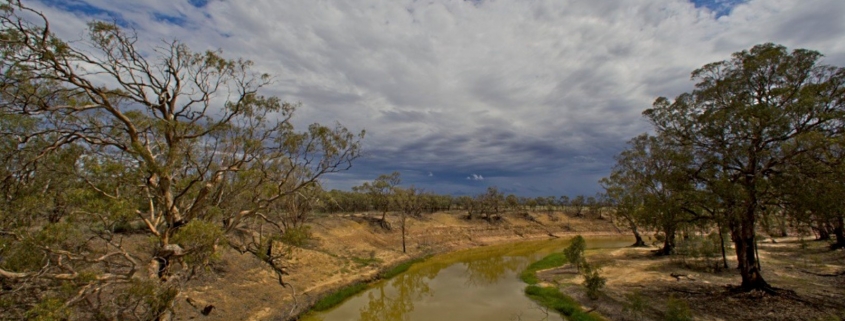

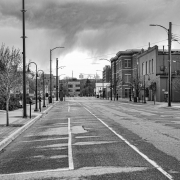
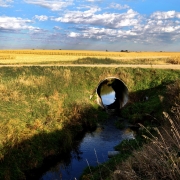
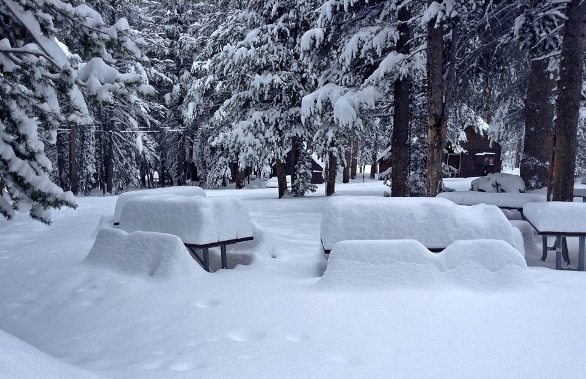

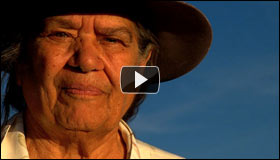


Leave a Reply
Want to join the discussion?Feel free to contribute!